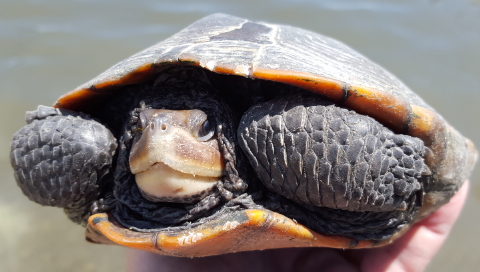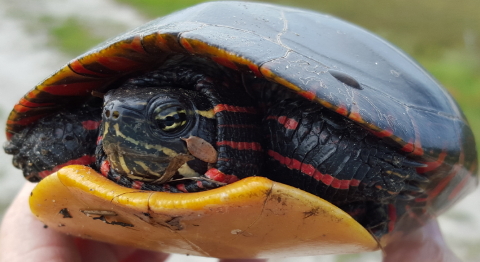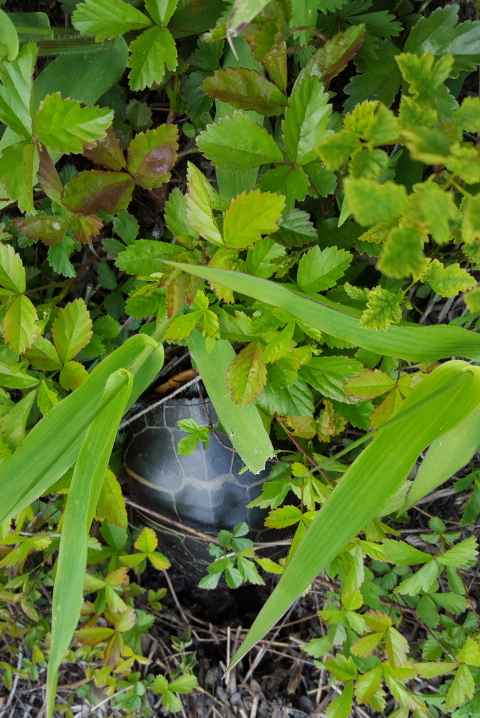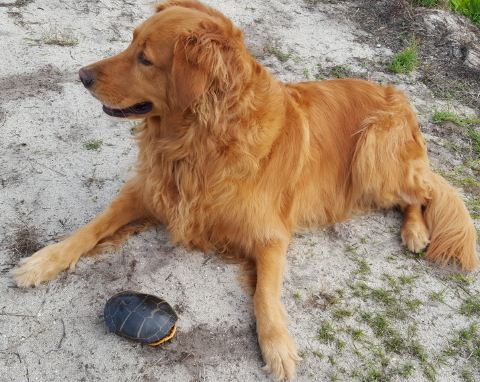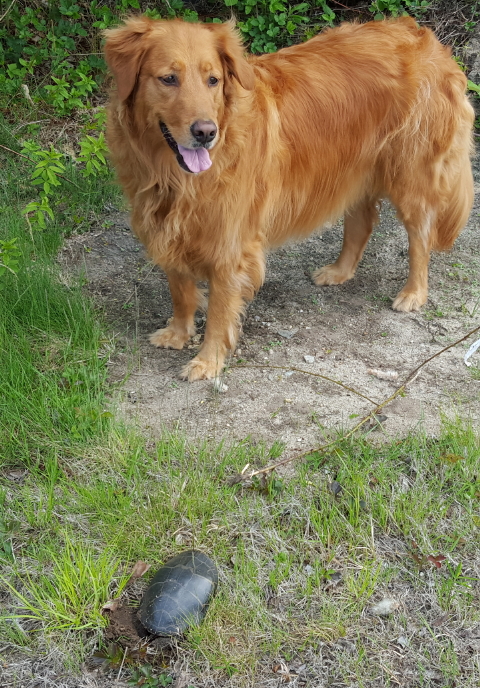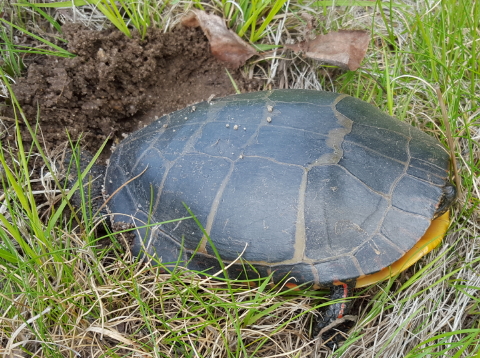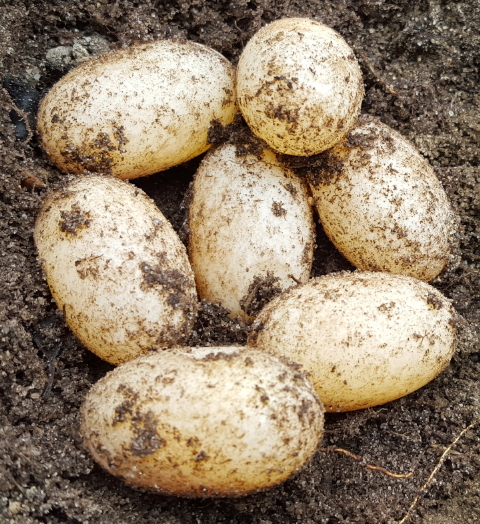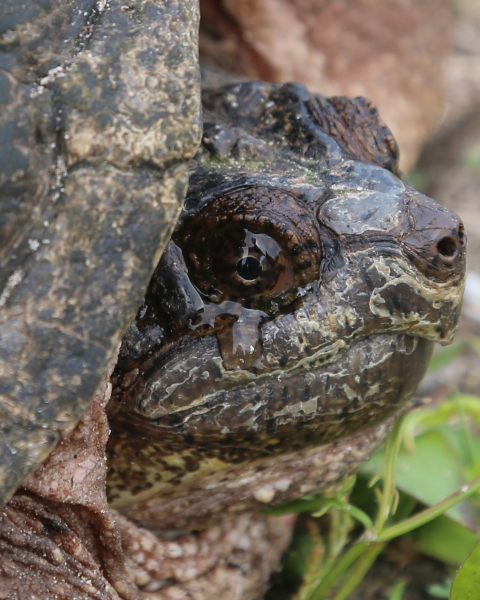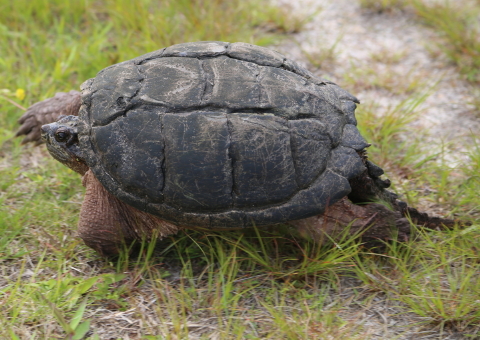Great Blue Heron (Ardea herodias) Female and Two HatchlingsÂ
A storm front charged across coastal Massachusetts this afternoon, May 31st, preceded by dark clouds and gusty winds, and dropping temperatures more than 20 degrees in five minutes. Â The Turtle Journal’s Don Lewis & Sue Wieber Nourse were caught by the storm while we visited the SouthCoast great blue heron rookery to document the birth of hatchlings. Â Behavior by adult birds on both active heron nests over the past few days strongly indicated that eggs had hatched, but the babies were too deeply set within the nests to confirm their birth.
Female Great Blue Heron and Two Hatchlings during Storm
Two months ago, on March 31st, we trudged down paths still covered with eight inches of snow to document the return of great blue herons to this SouthCoast rookery. Â Harsh winter weather conditions had postponed their arrival, just as bad weather had postponed all other spring emergence. Â (See Great Blue Herons Return to Rookery for more details.)
Great Blue Heron Female with Hatchling
This nest had been completed destroyed by hurricane force blizzards in January and February. Â It and two other nests within the rookery were rebuilt, two by herons and one by a pair of ospreys. Â For the full story of the rebuilding process, see Rebuilding Destroyed Nest and Loving Bonds.
Great Blue Heron Mother with Her Two Babies
While we had not been able to confirm births on earlier visits, we got lucky today with the storm. Â High winds swayed the northernmost nest and riled babies and mother just enough for us to get a peek of the hatchlings with binoculars and telephoto lens. Â Two beautiful great blue heron babies popped up while momma tried to keep them secured within the swaying nest. Â The nearby second heron nest likely also contains hatchlings, but the nest is much deeper and it will take a few more days of growth before hatchling heads are visible.
Osprey (Pandion haliaetus) Pair Arrived Late This Spring
The osprey nest within this rookery got a later start. Â The pair began rebuilding their winter destroyed nest on April 22nd; see Osprey Pair Rebuild Winter Destroyed Nest. Â We anticipate a late arrival for this year’s osprey hatchlings. Â (For more information on this osprey pair, see Osprey Love on the Fast Track.)
















